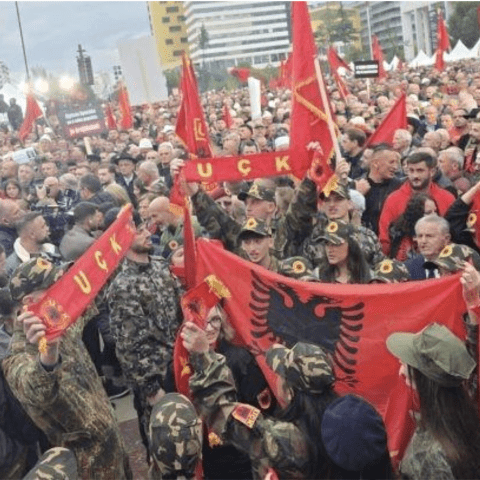“Ɓs we came to pass between two hills, on the left of which stood the small village of Iljas, suddenly, Anastasi stopped, raised his hand and pointed toward south and almost shouted: ‘There it is Sir, Vunoi!’ By the look on his face and the tone of his voice, one would think it was Paris he was pointing at.”
The excerpt is taken from Martin Leak, a British major, who traveled the Himara region in 1804. Anastasi was his guide from Vlora to Himara, and was from Vuno. Leak, being well traveled and a skeptic, did not enthuse much to Anastasi’s joy about his hometown, but once he lunched for a few hours at his guide’s house in Vuno, he was able to describe the place, culture and people with great detail and fascination.
More than two centuries later, the local and the traveler alike are still captivated by the beauty of this village and its surroundings
Vuno village lies on the curved slope of the Mjegullosh (Covered with fog) Mountain, 15 kilometers south of Dhermi and another 15 kilometers north of Himara, at about 200 meters above sea level. The name of the mountain comes from the fact that its peak, even though less than 1000 meters above sea level, is usually covered with clouds. The slope where the village stands overlooks a vast plain of olive trees before it starts descending again toward the sea. On the north, the plain is bordered by the Badlands of Vuno, a one of a kind structure of red quaternary clay deposits 10-15 meters thick that originate from the surrounding limestone hills. It is the result of erosion and human activity whose destructive powers have resulted in a striking scenery.
The deposits themselves are confined by the Canyon of Gjipe, a narrow straight between Vuno and Ilias created by the activity of a brook flowing through its narrow pass. It measures over 800 meters long and it ends at the gorgeous Beach of Gjipe, surrounded by high steep cliffs, with clean sand and sea, small caves and rocky shores.
The village is an overall architectural perfection, all constructed in stone with 2-3 storey houses standing in terraces atop each other, but each one of them able to preserve its share of light and view westward. Looking at these wonderful structures of stone one is reminded of the words of Ismail Kadare, the Albanian writer and Nobel nominee, who, describing his hometown of Gjirokastra, observed that “Ɖf one was to roll over from his window, he would surely land on the roof top of another house.”
An efficient configuration of causeways connects the neighborhoods, a demonstration that the village was planned from the start as a whole. Indeed, looked at from afar, Vuno looks like it was carved from the mountain, blending perfectly with its surroundings, compelling travelers to compare it to Amalfi. Leak himself compared the houses, to the Venetian palaces and he wasn’t that wrong considering the fact Vuno people, like the rest of the region have long served Italy in the past under the Kingdom of Naples and must have closely observed the architectural style of Southern Italy.
Immediately after leaving Vuno a local road separates from the National Road toward the west, goes through the olive grove filled plain and down the rest of the mountain toward the coast. Like the village itself, the coast line down Vuno is breathtaking. The Jali Beach is revealed to the traveler in a perfect half moon shape facing north and connected by a narrow shore of rocks with the Qeramidhe Beach. A pristine panorama, a far away experience from civilization, with immaculate sand and crystal clear waters. A long kept secret by locals and authorities who reserved it for their own holidays, it has lately become a more sought after destination as improved road infrastructure has opened the doors to the public; unfortunately so, I might add, for it is bound to lose its most precious quality, the sense of privacy and peace that its isolation used to offer.
Jali is perhaps one of the rare places, ironically thanks to the communist isolation of the past, that have survived consumerism and the tourism boom of the last decades around the Mediterranean coastline.
Yet, it’s not too late to still enjoy this region, before it joins the rest of the concrete civilization, and we are left with only a memory.










